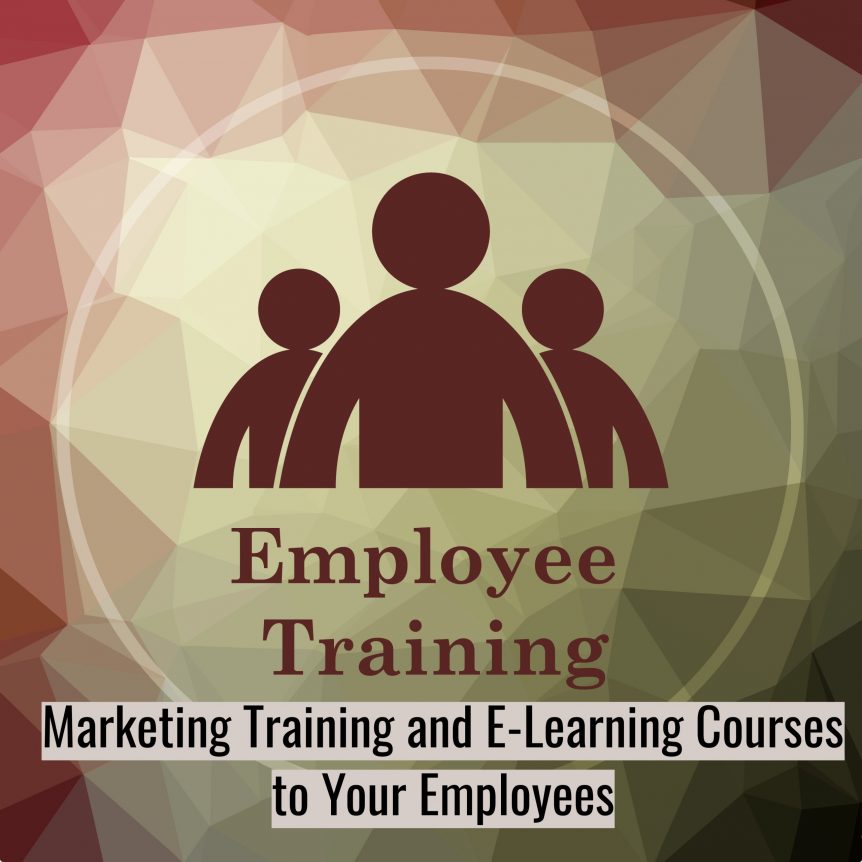Marketing Training and E-Learning Courses to Your Employees
What marketing activities do you do to promote training courses for your employees? Is it enough, and do you get marketing and promotional support from your Dubai e-learning developer?
Marketing is essential to the ultimate success of individual modules and courses as well as to your overall training strategy.
After all, while there are lots of different ways to measure the success of your training and e-learning courses, the starting point is to get employees to do the training in the first place. In e-learning, this is known as course completions and it is one of the most commonly used metrics to measure learner engagement.
Employees can’t complete your courses and modules if they don’t know about them, however.
You can take this a stage further too as the ideal situation is that employees not only know about the modules that are available but are enthusiastic and excited about doing them.
This requires marketing and promotion.
Getting the Message Right
Marketing training and e-learning courses to employees in your company requires the presentation of two connected but different messages.
The first message is about the importance of training. This means explaining the company’s training objectives to employees as well as the company’s training priorities, what the company wants to achieve with its training programmes, the benefits of training to the company, and the benefits of training to the employee.
You can also provide tips, talk about how training helps employees in their career development, and encourage the sharing of information. In other words, give advice to employees on how to optimise their learning experience.
The second message you need to get across to employees in relation to training is information on the specific training courses that are available. This includes both those that are optional as well as those that employees must complete.
Remember with this point that you can’t assume that a single method of communication will be 100 percent effective. You can’t just send an email to relevant employees or post a message on a bulletin board, for example.
Instead, you need a marketing strategy to regularly communicate with employees across multiple channels.
Practical Experience
We have practical experience in Capytech that shows the importance of marketing and promoting training and e-learning courses. We primarily do this through animated videos that increase awareness and excitement about the modules we create.
We have done this for a range of clients and, when combined with other strategies (see the tips section below) it delivers impressive results.
How Do You Promote Training and E-Learning Courses to Employees?
Research conducted by LinkedIn found that 56 percent of employees find out about training programmes offered by their employer from the company intranet while 47 percent find out about training from email campaigns. The research also found that 44 percent of employees find out about training from managers and executives.
This information provides a good starting point for the development of your marketing strategy, i.e. you need to get buy-in from the leadership team at all levels and, at the very least, you need to communicate with employees about training courses via email and the company intranet.
Other commonly used methods and channels to promote e-learning modules and training to employees include:
- Internal talent and upskilling initiatives
- Posters and signage
- Highlighting individual employee training success stories
- Running a competition (for example, the team who completes the most training in a given time period wins a prize)
- Instant messaging tools
- Lunch and learns, i.e. voluntary meetings and presentations that take place during employee lunch breaks where you provide the food and give information to your team about e-learning modules, training opportunities, etc
Tips for Marketing Training to Employees
- Get buy-in at the highest level – examples include getting the company CEO to introduce the training or explain the benefits.
- Get management buy-in – managers play a crucial role in communicating to employees about the courses they should complete and the importance of doing so.
- Communicate using multiple channels and media – this includes the channels in the list above. You can also write blogs about training and knowledge sharing plus you can include information about the courses that are available in your internal company newsletter. You should also consider starting a closed social media group that offers tips, gives information about new training modules, and, crucially, enables employees to have conversations and ask questions about training. This could be on Facebook or LinkedIn, for example, or you could use an instant messaging tool. As with all forms of marketing, you’ll get better results if the communication is two-way.
- Get advice and opinions from key members of staff – you should involve key members of staff as early as possible in the creation of the e-learning or training course. This isn’t about key members of staff who are required to provide content – that’s a different topic. Instead, we’re talking about winning over influencers in your organisation as they will then promote the training to others, including those who look up to and report to them. Asking their opinion on the training and then implementing any suggestions that are beneficial to your training goals can help get this buy-in.
- Encourage feedback from learners – we’ve already mentioned above that marketing should be a two-way conversation. Another method you can use to encourage a conversation with learners is to ask for their feedback when they complete a course. If they feel like they are involved and they understand that you value what they think, they are more likely to be enthusiastic about future training courses.
Ongoing Exercise
Training in your organisation is an ongoing exercise, so marketing and promoting the courses you create should be ongoing too. You will start seeing better results, results that include employees being more engaged with the company’s training efforts.
